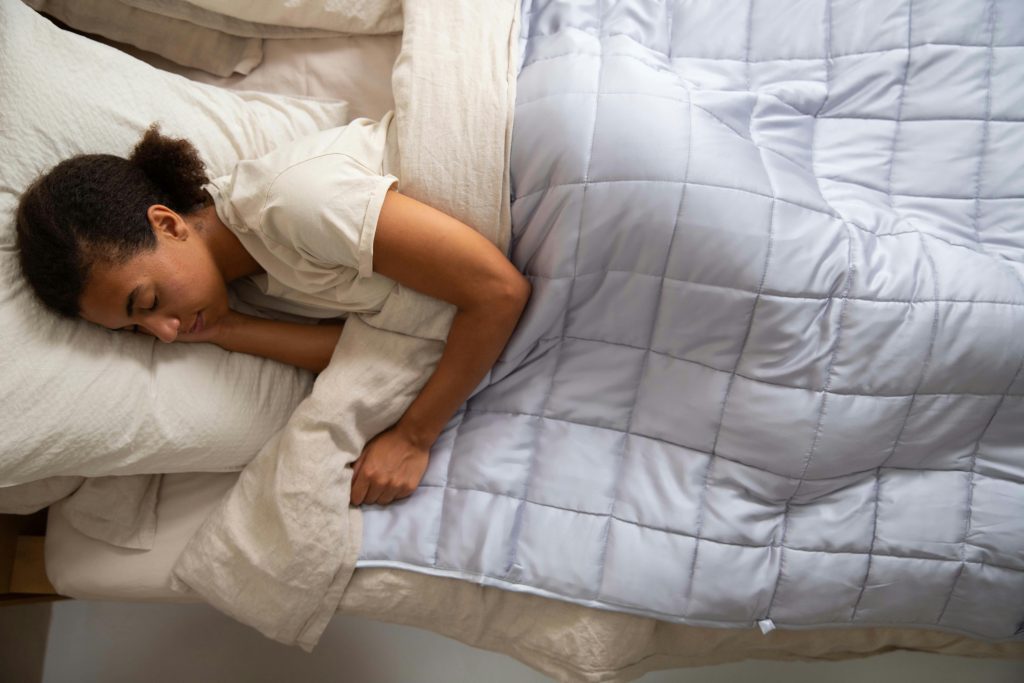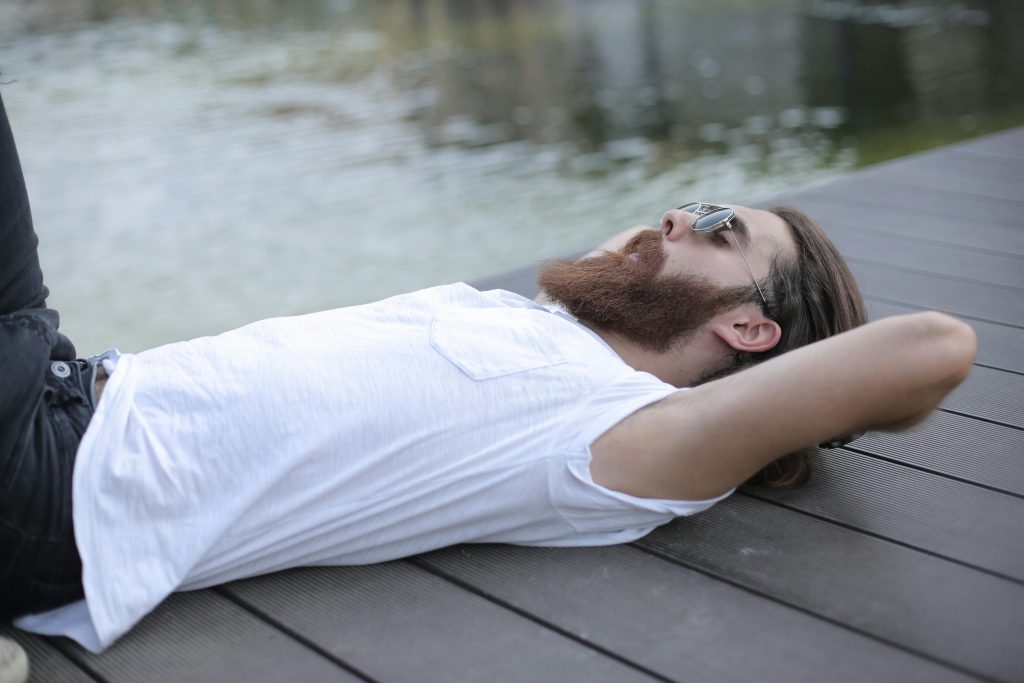Introduction
In our fast-paced world, stress and racing thoughts often undermine one of our most vital needs: restorative sleep. Mindfulness—the practice of nonjudgmental, present-moment awareness—has emerged as a scientifically validated tool to calm the mind and body, paving the way for deeper, more refreshing rest. From reducing pre-sleep rumination to regulating the nervous system, mindfulness techniques improve sleep onset, duration, and overall quality. In this article, we explore the mechanisms by which mindfulness enhances sleep, review the latest research findings, and offer practical exercises to integrate mindfulness into your nightly routine.

The Science Behind Mindfulness and Sleep
Stress, Arousal, and the Sleep Cycle
- Hyperarousal model of insomnia: Chronic stress elevates cortisol and sympathetic activity, making it difficult to transition from wakefulness to sleep.
- Mindfulness effect: Regular practice downregulates the hypothalamic-pituitary-adrenal (HPA) axis, reducing cortisol levels and shifting the autonomic balance toward parasympathetic (“rest-and-digest”) dominance.
Neurobiological Mechanisms
- Prefrontal cortex engagement: Mindfulness strengthens top-down regulation of the amygdala, dampening emotional reactivity that fuels bedtime anxiety.
- Default mode network (DMN) modulation: Mindful awareness decreases DMN activity—the brain network associated with mind-wandering—reducing evening rumination that delays sleep onset.
Research Evidence
Randomized Controlled Trials
- Mindfulness-Based Stress Reduction (MBSR) and Insomnia
- A 2015 RCT found that eight weeks of MBSR reduced sleep latency by 30% and improved sleep efficiency by 15% compared to controls.
- Mobile App–Delivered Mindfulness
- Participants using a mindfulness app before bed reported 25% fewer nocturnal awakenings and 40% greater subjective sleep quality after four weeks.
Meta-Analyses and Reviews
- A 2020 meta-analysis of mindfulness and sleep studies demonstrated significant improvements in sleep quality (Hedges’ g = 0.45) and insomnia symptoms (g = 0.53), rivaling cognitive-behavioral therapy for insomnia (CBT-I).
How Mindfulness Improves Sleep Quality
1. Reducing Pre-Sleep Rumination
By training the mind to observe thoughts without judgment, mindfulness prevents the spiral of worry (“I have to get up early,” “What if I don’t perform tomorrow?”) that lengthens the time it takes to fall asleep.
2. Calming the Body Through Breath Awareness
Deep diaphragmatic breathing—core to many mindfulness exercises—stimulates the vagus nerve, lowering heart rate and blood pressure, and signaling to the body that it’s safe to relax.
3. Enhancing Body Awareness and Relaxation
Body-scan meditations systematically direct attention to muscle tension. Releasing tightness in the neck, shoulders, and jaw creates the physical conditions conducive to sleep.
4. Establishing Consistent Pre-Sleep Rituals
Regular mindfulness practice at night conditions the mind—through classical conditioning—to associate specific exercises with the impending state of sleep, streamlining the transition to slumber.

Practical Mindfulness Exercises for Better Sleep
A. 4–7–8 Breathing Technique
- Exhale completely through your mouth.
- Inhale quietly through the nose to a mental count of 4.
- Hold the breath for a count of 7.
- Exhale through the mouth for a count of 8.
- Repeat for 4–6 cycles to rapidly induce relaxation.
B. Progressive Muscle Relaxation (Body Scan)
- Lie comfortably on your back.
- Starting at your toes, tense each muscle group for 5 seconds, then release for 15 seconds.
- Move progressively upward—calves, thighs, abdomen, chest, arms, neck, face—cultivating deep physical ease.
C. Mindful Observation of Sensations
- Sit or lie in bed with eyes closed.
- Notice the feeling of sheets against your skin, the weight of your limbs, and ambient sounds.
- Label sensations (“warmth,” “pressure,” “buzz”) without judgment and return attention to the body whenever the mind wanders.
D. Loving-Kindness Meditation (Metta)
- Silently repeat phrases: “May I be safe. May I be peaceful. May I be well.”
- Expand the well-wishes outward—to loved ones, acquaintances, and eventually all beings.
- This practice cultivates positive emotions, replacing bedtime anxiety with compassion and calm.
Integrating Mindfulness into Your Sleep Routine
- Set a Consistent Bedtime Ritual: Dedicate 10–20 minutes before lights-out to mindfulness exercises instead of screen use.
- Create a Sleep-Friendly Environment: Dim lights, maintain a cool room temperature (60–67°F), and ensure minimal noise.
- Limit Stimulants and Technology: Avoid caffeine after mid-afternoon and cease screen exposure at least 30 minutes before your mindfulness session.
- Use Guided Recordings: For beginners, apps like Headspace, Calm, or Insight Timer offer sleep-specific guided meditations.

Tracking Progress and Troubleshooting
- Maintain a sleep journal: Record bedtime, wake time, number of awakenings, and subjective sleep quality on a 1–10 scale.
- Adjust practice duration: If 20 minutes feels too long, start with 5 minutes and gradually increase.
- Address persistent issues: If sleep difficulties continue after 4–6 weeks of consistent mindfulness practice, consult a sleep specialist to rule out conditions like sleep apnea or restless legs syndrome.
Conclusion
Mindfulness offers a powerful, accessible pathway to enhance sleep quality by calming the mind, reducing stress physiology, and fostering an environment of restorative rest. Backed by robust scientific evidence, simple practices—breathwork, body scans, and loving-kindness meditations—can transform your nightly routine and break the cycle of sleeplessness. Start tonight: integrate a brief mindfulness exercise into your pre-sleep ritual and track your progress. With regular practice, you’ll notice faster sleep onset, fewer awakenings, and a deeper sense of renewal upon waking.

Leave a Reply